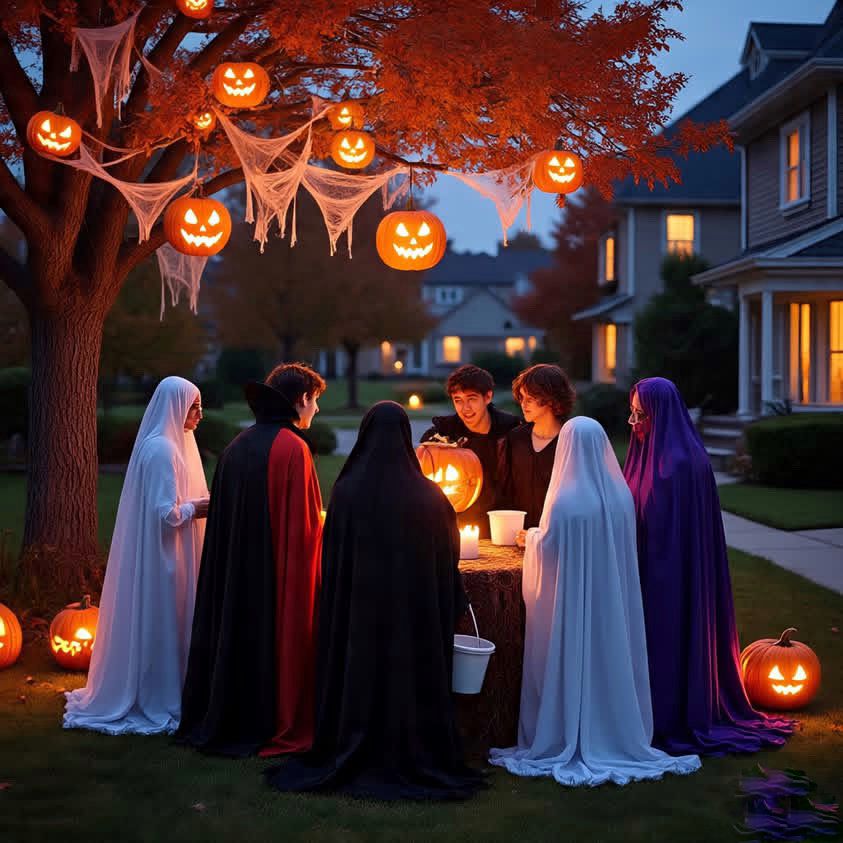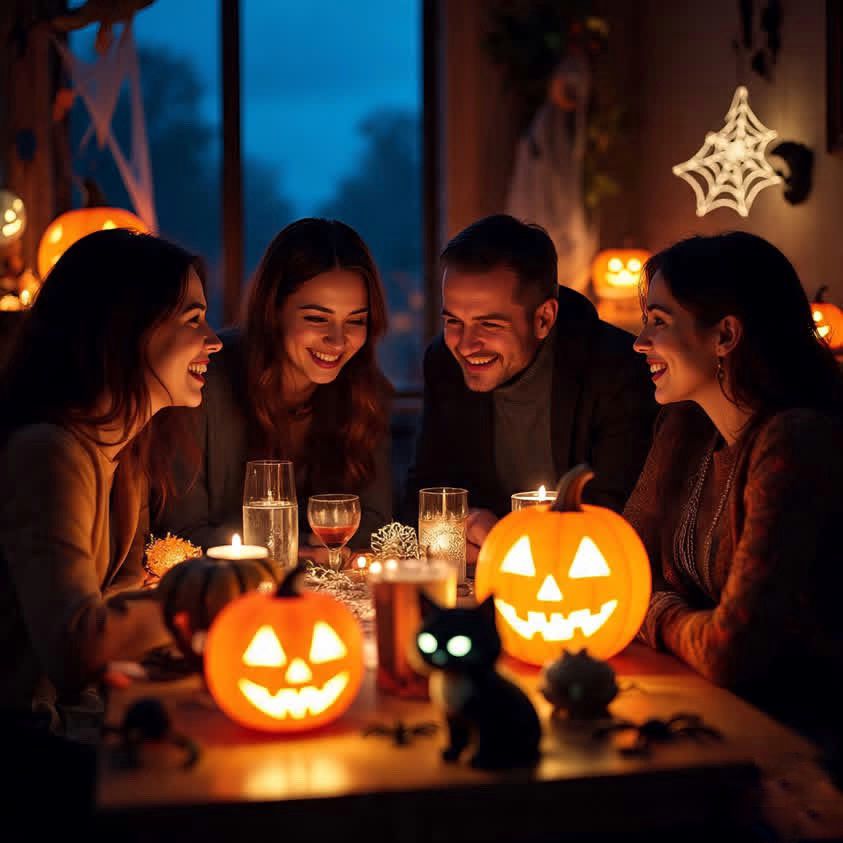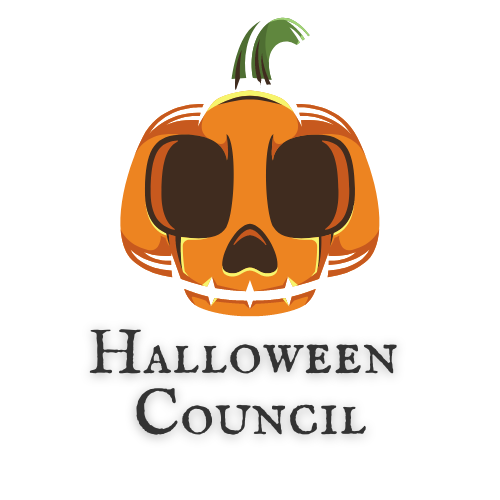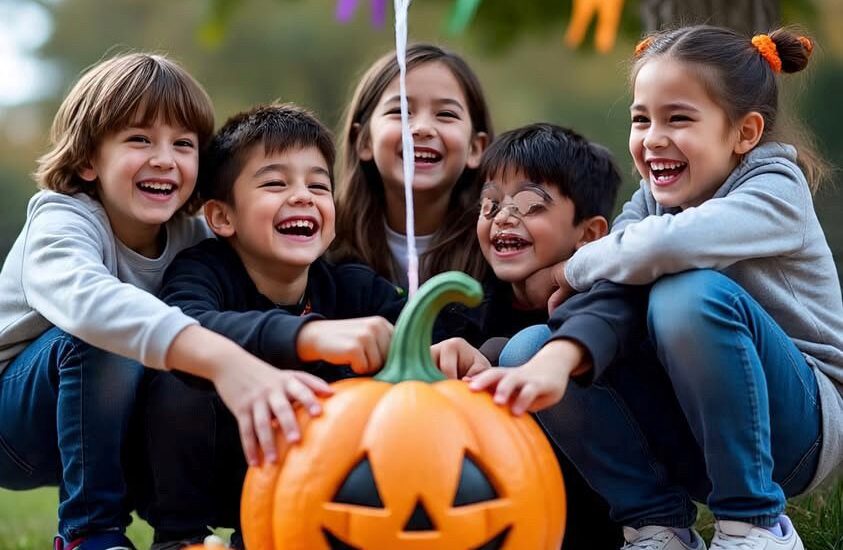When I think about Halloween today, I picture kids in costumes collecting candy from neighbors, maybe some elaborate yard decorations, and perhaps a few jump scares at haunted houses. But Halloween has not always been the family-friendly sugar fest we know now. The holiday carries with it a long and honestly pretty wild history of pranks, mischief, and downright chaos that would probably get you arrested today. Learn how trick-or-treating tamed America’s most chaotic holiday tradition.
The roots of Halloween mischief actually stretch back centuries to the ancient Celtic festival of Samhain. The Celts believed that on the night of October 31st, the boundary between the living and the dead became blurred. People would light bonfires and wear costumes to ward off ghosts, but they also engaged in various forms of mischief making. They thought that spirits were wandering the earth, which gave them a convenient excuse to blame any trouble on supernatural forces rather than their own neighbors.
When Irish and Scottish immigrants brought these traditions to America in the 1800s, Halloween pranks truly began to flourish. The Victorian era saw what people called “Mischief Night” or “Cabbage Night” spread across communities. Young people would go out after dark and engage in relatively harmless pranks like soaping windows, switching gate signs, or relocating farm equipment. I have read accounts of entire outhouses being tipped over or moved to completely different locations. Can you imagine waking up to find your outhouse three blocks away? The audacity honestly impresses me.

But things escalated dramatically during the early 20th century. The 1920s and 1930s saw Halloween pranks transform from innocent fun into genuine vandalism. The Great Depression probably did not help matters, as frustrated youth channeled their energy into increasingly destructive Halloween activities. Cities reported overturned cars, damaged storefronts, and even small fires. Detroit in particular earned an infamous reputation for what locals called “Devil’s Night,” when arson and serious property damage became almost expected on the eve of Halloween.
Communities struggled with how to handle this annual chaos. Police departments were overwhelmed trying to control roving bands of pranksters. Property damage costs mounted. Something had to change, and that change came in the form of organized trick or treating. Civic groups and parents began promoting door to door candy collection as a wholesome alternative to destructive pranks. The idea was simple but brilliant: give kids something fun and legal to do, and maybe they would leave the windows and cars alone.
The strategy worked remarkably well. By the 1950s, trick or treating had become the dominant Halloween activity for children across America. Candy companies certainly did not mind this development either, as Halloween transformed into a major commercial holiday. The focus shifted from mischief to costumes and treats, though pranks never disappeared entirely.
I remember hearing stories from my grandfather about Halloween in the 1940s, when he and his friends would engage in pranks that seem quaint by modern standards. They would knock on doors and run away, or leave mysterious packages on doorsteps that turned out to contain nothing but leaves. He always laughed when telling these stories, but he also acknowledged that some kids took things too far even back then.

Modern Halloween pranks tend to be much more restrained, at least for most people. We might toilet paper a friend’s tree or leave a fake spider on someone’s porch. Social media has given rise to elaborate prank videos and viral Halloween stunts, which provide an outlet for mischievous creativity without causing real harm. Yet certain traditions persist in pockets across the country. Some communities still observe Mischief Night on October 30th, though the activities are generally milder than they were decades ago.
The psychology behind Halloween pranks fascinates me. Why do we feel emboldened to cause mischief on this particular night? Part of it surely relates to the costumes and masks, which provide a sense of anonymity and allow people to step outside their normal social roles. The darkness and spooky atmosphere create a liminal space where normal rules seem temporarily suspended. Halloween gives us permission to be a little bit bad.
Law enforcement agencies have adapted to Halloween mischief over the years. Many departments increase patrols on October 30th and 31st, and some communities have implemented curfews for young people. Cities that once struggled with massive vandalism problems have largely brought things under control through a combination of prevention programs, youth activities, and yes, good old fashioned police presence.
Looking at the evolution of Halloween pranks tells us something interesting about how society negotiates between order and chaos, between rules and rebellion. We want to let loose and have fun, but not at the expense of genuine harm to others or their property. The shift from destructive mischief to organized trick or treating represents a collective decision to preserve the playful spirit of Halloween while channeling it in more constructive directions.
Reference .
U.S. Census Bureau. (2023). Halloween by the numbers: Facts and statistics. U.S. Department of Commerce. https://www.census.gov/newsroom/facts-for-features/2023/halloween.html
Library of Congress, American Folklife Center. (2019). Halloween: A brief history. https://www.loc.gov/folklife/halloween.html
National Park Service. (2021). Cultural history of Halloween in America. U.S. Department of the Interior. https://www.nps.gov/articles/cultural-history-halloween.htm

